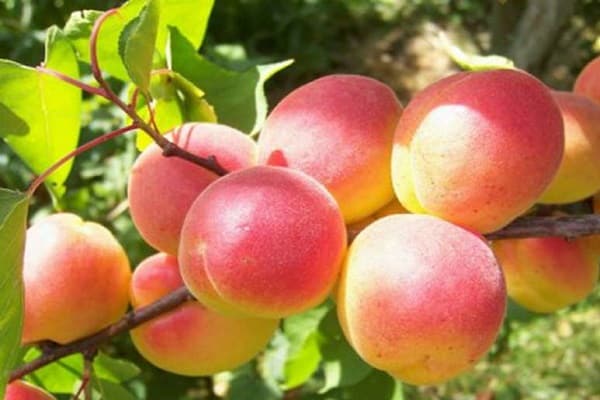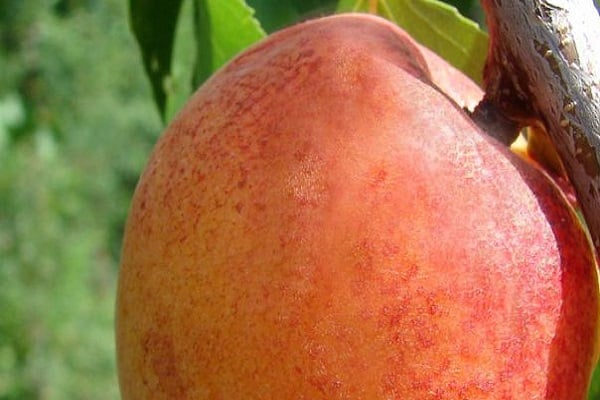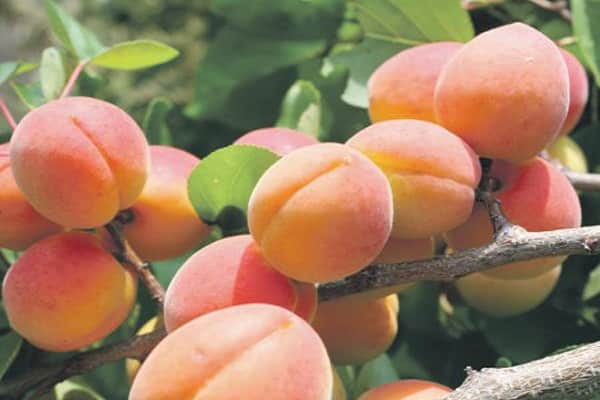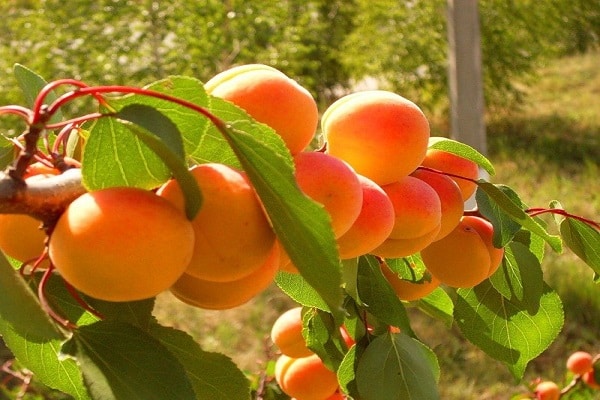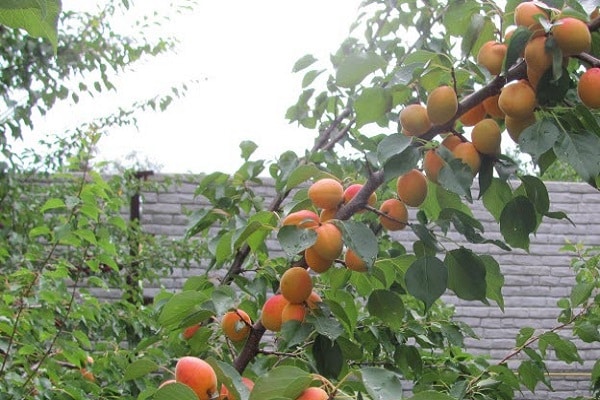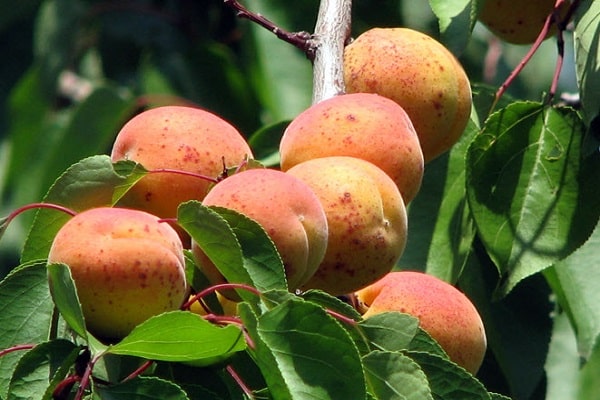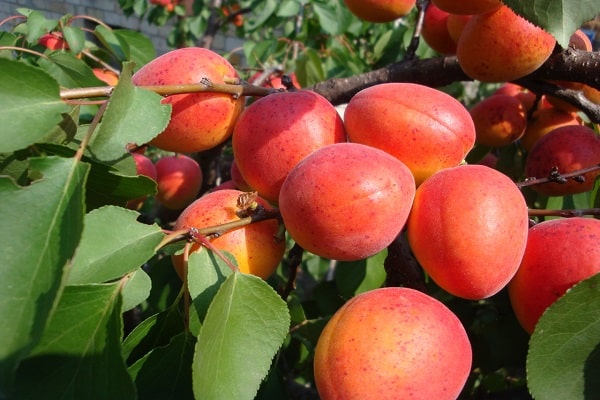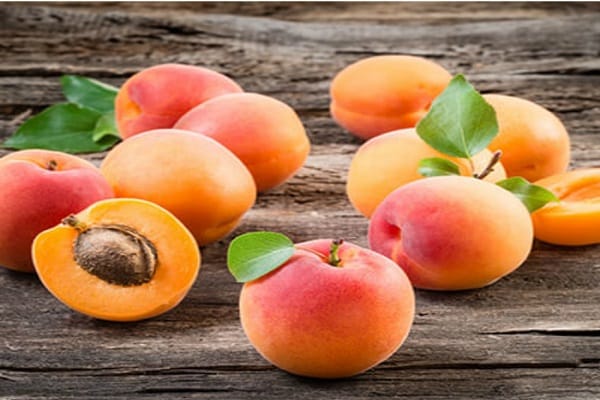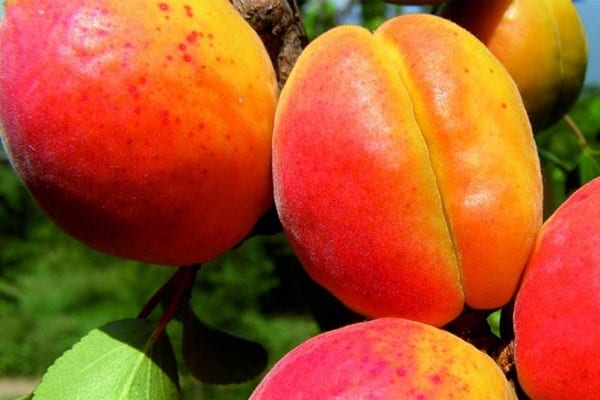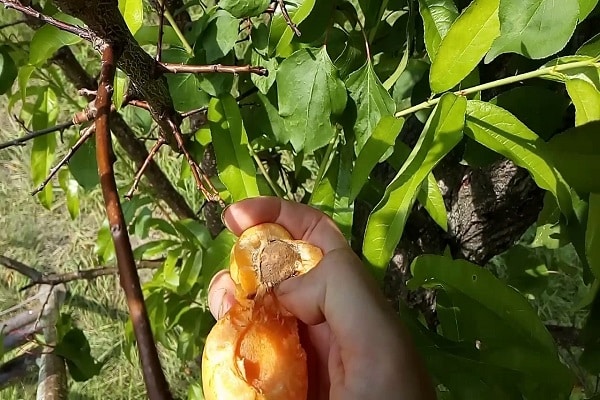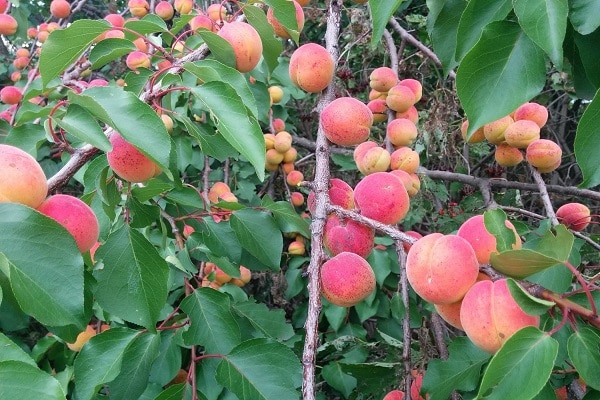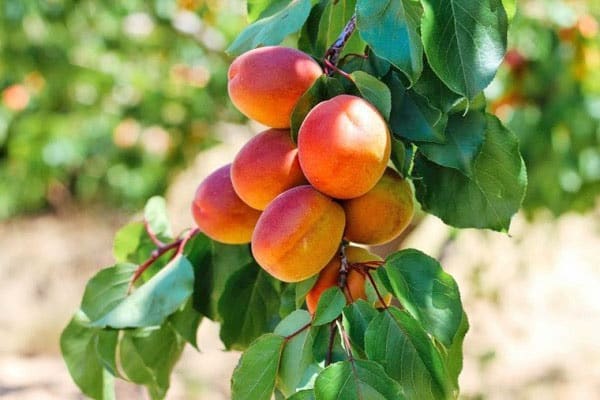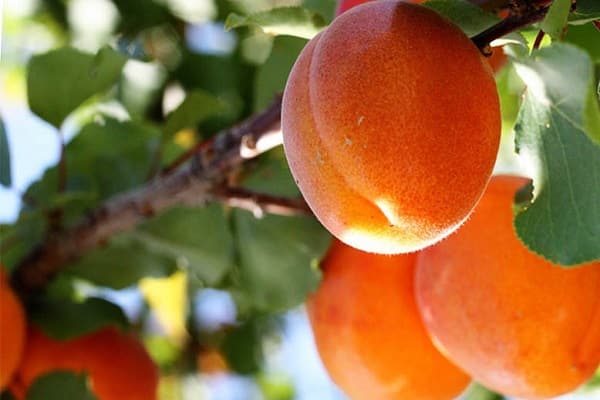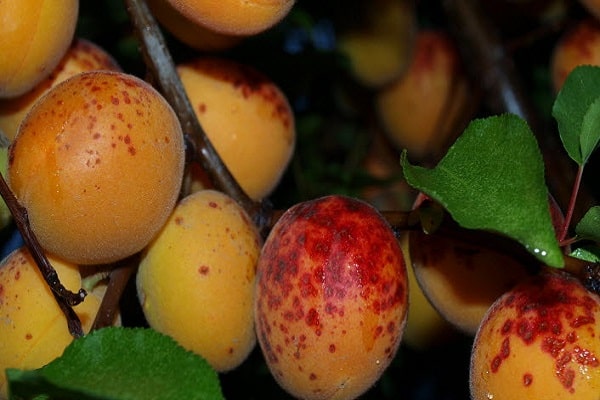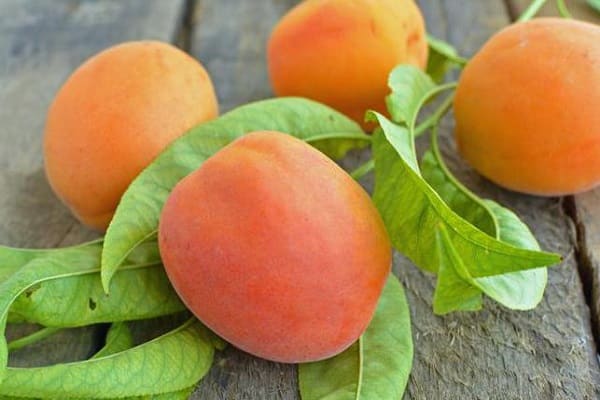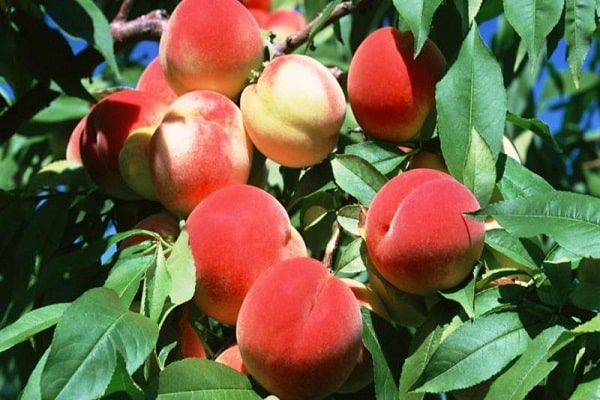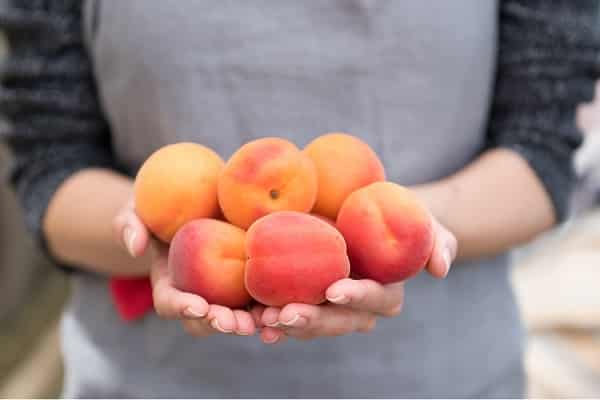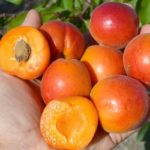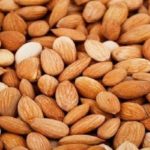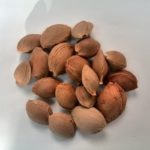The process of growing Red-cheeked apricot in climatic conditions unusual for this type of fruit tree has been significantly simplified. Now apricot orchards with bright and plump fruits can be grown not only in the subtropics. Thanks to the selective breeding of the newest variety of apricot, called the son of Red-cheeked, gardeners received a so-called adapted hybrid, which regularly produces rich harvests.
Description of the variety
The fruit tree is a tall and vigorous fruit crop, with a lush crown and spreading branches. Representatives of this variety sometimes reach 10 meters in height, but usually their growth stops at the five-meter mark.
Important! A properly formed crown facilitates not only the process of caring for the tree itself, but also the subsequent harvesting process.
In the description of the variety, small fruits are indicated by a rounded or ovoid shape with a deep seam on the abdomen. The orange-yellow hue of the fruit with a red side is a characteristic feature of this apricot, which is not for nothing called Red-cheeked.
The sweetest and juiciest flesh of the fruit has a barely noticeable sourness and a faint orange color. The rough stone has a sweet kernel inside and is easily separated from the pulp of the fruit itself. The tree, in principle, is a long-liver, the lifespan of which varies between 50-60 years.
Produced by breeders of the Crimean district in 1947, it was subsequently taken as the basis for recreating more advanced apricot hybrids. Son Red-cheeked, thanks to its winter hardiness, began to be planted in Central Russia, expanding the growing area over time.
In addition, the described apricot, brother of Red-cheeked Late, Nikitsky, Saligirsky, received, unlike the others, a longer life span, ranging from 60 to 75 years.
History of selection
There is little information about the original homeland of the Red-cheeked miracle and its original origin. Although for the first time these fruit trees found themselves in the mountains of Central Asia.
Subsequently, this apricot variety began to be bred in the territories of Armenia.Well, in the post-war period, breeders of the Nikitsky agrobotanical garden in Crimea gave this variety a new life.
Today, the competitiveness of this variety, among its European relatives, is a fait accompli. Therefore, thanks to selective selection, this unpretentious species of apricot feels comfortable regardless of the area where it grows.
Advantages and disadvantages
Among the many advantages of the described variety, the most positive aspects are highlighted in the form of:
- resistance to arid climates and low temperatures;
- self-fertility;
- immunity to certain diseases;
- productivity;
- low demands on soil;
- the highest taste qualities of fruits.
Among the disadvantages of this culture is excessive sensitivity to sudden changes in temperature. The spring period, with alternating thaws and frosts, is the most dangerous for the life of this apricot variety. Temperature fluctuations negatively affect the buds of future flowers, which may die from such negative influences.
Characteristics of trees and fruits
These fruit trees are characterized by: a powerful crown, sweeping and strong branches. Apricot crop is resistant to strong winds, easily adapts to new conditions and tolerates low temperatures.
There are no special requirements for planting young seedlings. The trees have strong protection - thick bark, are accustomed to an abundance of sunlight, and therefore grow well in open areas.
Red-cheeked apricot is a hardy variety, as evidenced by its growing conditions in the “harsh Russian winter.”
Poured, already ripened apricots have a golden-orange color.A characteristic feature of this variety is the red barrel, the velvety surface of the fruit and the excellent aroma when the fruit is broken.
The period of fruit ripeness occurs at the end of July. Due to the variability of the fruit ripening process itself, harvesting is carried out in stages, which helps prevent the possibility of fruit shedding.
The variety is characterized by excellent transportability and the ability to store the crop for more than 10 days after harvest.
Yield and storage
The yield of apricot of a given variety directly depends on how the seedlings were cared for, from the planting stage to fruiting. If all the rules and recommendations were taken into account, then in the end the amateur gardener will be rewarded with a luxurious apricot garden and a high harvest.
The volumes of already harvested fruit can also be increased by gradually removing the fruit. After all, then the unripe apricots remaining on the tree will fill up and become larger in volume. This will also solve the problem of preserving the harvest - the fruits will linger on the tree for the allotted time, waiting in the wings.
Depending on what needs the apricots will be used in the future, they will be collected at different stages of fruit ripening. To obtain dried fruits, it is more advisable to use overripe fruits, for food - ripe ones, without any defects. For transportation over many kilometers, it is better to select fruits that are slightly yellow in color. Any fruit is suitable for saving for the winter; a real housewife will be able to put it to good use.
Favorable areas for cultivation
The best areas for the growth of this type of fruit tree and its relatives have become the northern part of the southern zones, as well as the southwestern regions.The apricot has taken root and adapted perfectly to the regions of the North Caucasus, Volga region, Crimea, as well as to Ukraine, Belarus, and Latvia.
The variety of the described culture, due to its low demands, has become widespread in the territories of the Krasnodar Territory, in Rostov-on-Don and in many other parts of Russia.
Planting and care
The variety of this crop is light-loving, therefore the choice of site for planting it should fall exclusively on areas well warmed by the sun's rays. The distance from groundwater to the ground surface must be at least two and a half meters. The soil should be loose. On chernozems, loamy and sandy loam soils, this variety of apricot will grow and bear fruit better.
Important! This fruit crop does not accept acidic and peaty lands; it simply does not grow in such areas.
Plots for planting such trees should be located on hills, protected from strong winds by some kind of fence. Upon reaching the age of four, the crop will become stronger, and the need for its protection from gusts of wind will automatically disappear.
When planting apricot trees, the following rules must be observed:
- Planting of this crop should be done in mid-spring, in April or in the autumn period, falling in October.
- During the growing season apricot planting not recommended.
- The planting hole for the seedling must be prepared ahead of time to ensure timely shrinkage of the soil and facilitate manipulations associated with planting.
- In the autumn, such a hole is formed two weeks before planting; for planting crops in the spring, the hole is prepared in the fall.
- There should be a distance of at least 3-5 meters between the seedlings. The same gap is allowed between apricot and other trees.
The phased period of planting seedlings includes:
- digging a hole 70/80 centimeters wide and deep;
- laying drainage in a layer of 10 centimeters;
- filling the hole with fertilizers mixed with soil.
Important! The rhizomes of seedlings should not be adjacent to fertilizing without soil, in order to avoid burns.
Further manipulations when planting apricots imply:
- filling the hole with a mixture and forming a certain hill from it and the earth;
- planting a seedling on a tubercle, in a vertical position, with an even distribution of its root system and further sprinkling of soil without filling the neck of the plant;
- soil compaction by compaction;
- watering and mulching the soil.
You can also grow apricot crops from seeds. To do this, planting material must be soaked in warm water for a day. And then place the bones in holes that are 6 centimeters deep, with a distance between each of them up to 15 centimeters. When the plant reaches two years of age, it can be transplanted into the ground.
Seedlings of this variety of apricot trees are not particularly demanding in terms of care. Therefore, by listening to the advice of experienced gardeners on how to properly care for a plant, you can increase not only the growth and vital activity of the crop, but also increase its productivity.
To avoid excessive soil moisture, it is necessary to mulch the soil layer under the plant with due regularity. As a result of such actions, air circulation between the rhizomes will improve, and excess liquid will evaporate.
Irrigation is necessary at the time of apricot crop growth. Watering is carried out for the first time during the flowering period, then in the spring during the formation of shoots and in mid-summer.The required amount of water for each watering is 2-3 buckets of warm liquid. The last time watering is carried out at the end of autumn, using 5-6 buckets of water.
In the first year of growth, the seedling needs pruning. The formed crown should be rejuvenated from time to time. Places where powerful branches were cut must be treated with a special disinfection method. Diseased conditions of trees must be controlled through special manipulations using chemical mixtures or oil paint.
In the autumn, the trunk of the apricot tree also needs to be treated, using whitewash and the addition of lime and copper sulfate.
Proper planting and care of fruit trees will provide the gardener with a rich harvest and a luxurious apricot orchard in the future.
Winter hardiness
Apricot trees of this variety have below average winter hardiness. This is especially true for the cold regions of Central Russia, the Urals, with their inhospitable winters, low temperatures, constant precipitation and spring frosts. But, with certain care, even here the apricot, in the form of the Red-cheeked miracle, grows and produces good harvests.
Diseases and pests
A dangerous and common parasite that often infects apricot crops is aphids. To combat these insects, they resort to chemicals. Aphids are also repelled by nasturtium planted in a circle near an infected tree.
There are also diseases that interfere with the proper development of trees in the form of:
- Moniliosis.
- Brown spot.
- Clusterosporiasis.
- Verticillium.
- Infectious drying.
- Leaf curl.
With moniliosis, the leaves on apricot branches turn black, the bark becomes covered with grayish warty rashes, and the fruits die before they even have time to ripen. For preventive purposes, trees are treated with any fungicide; during treatment, damaged parts of the plant are sprayed with copper sulfate.
When a disease occurs in the form of brown spot, which usually begins in mid-summer, the affected leaves are treated with Bordeaux mixture.
Clusterosporiosis infects the entire tree, but especially the leaves, right down to the holes. And the skin of fruits affected by this disease becomes covered with red-brown ulcers. Copper sulfate is actively used for both prevention and therapeutic purposes to relieve this disease.
The symptoms of a particular disease vary. Therefore, it is more advisable to treat trees for preventive purposes, since it is much more difficult to treat a tree affected by the fungus.
Important! It is better to treat any diseases or pests in the fall, when the leaves fly off the tree, or in the spring, while the apricot has not yet bloomed.

